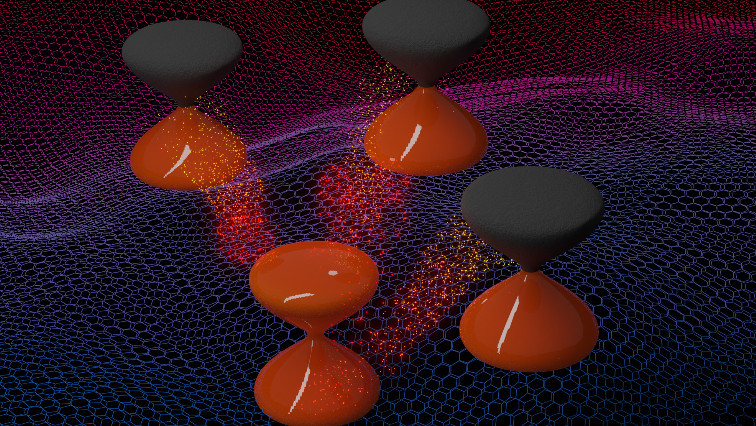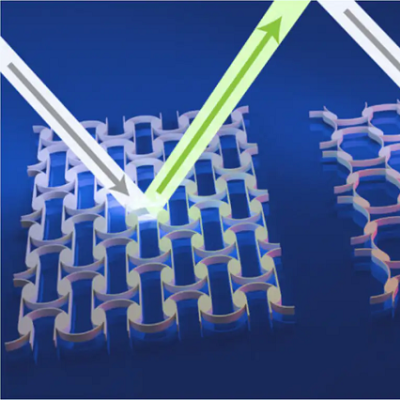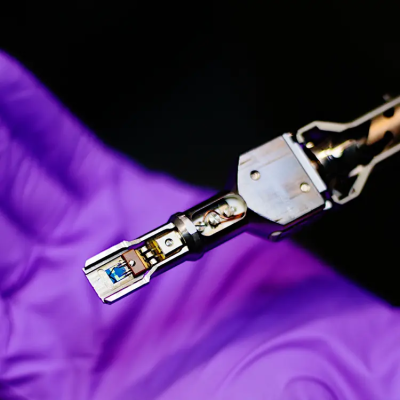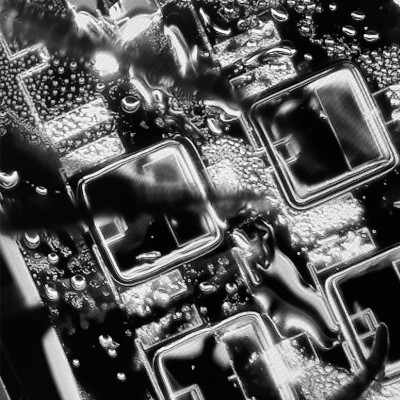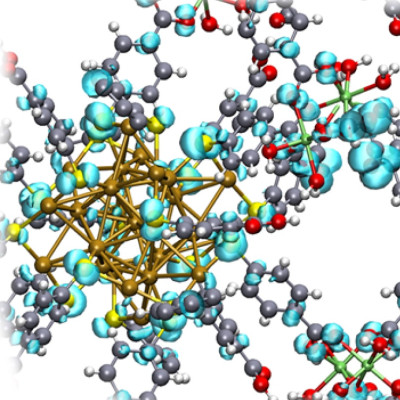A Princeton University-led team of scientists has imaged the precise microscopic underpinnings responsible for many quantum phases observed in a material known as magic-angle twisted bilayer graphene (MATBG). This remarkable material, which consists of twisted layers of carbon atoms arranged in a two-dimensional hexagonal pattern, has in recent years been at the forefront of research in physics, especially in condensed matter physics.
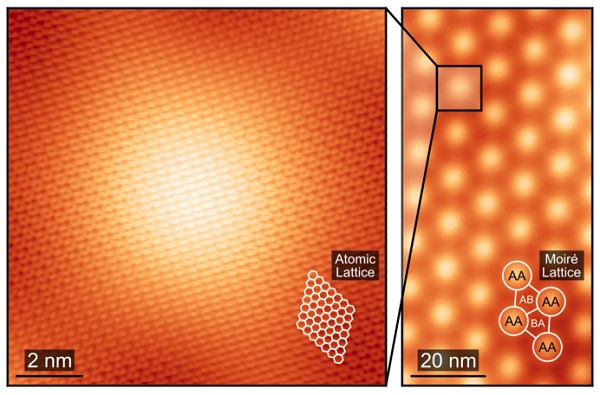
Scanning tunneling microscopy images of twisted bilayer graphene, which show the graphene atomic lattice (left panel) and the magic-angle graphene moiré superlattice (right panel).
Specifically, the researchers were able to, for the first time, capture unprecedentedly precise visualizations of the microscopic behavior of interacting electrons that give rise to the insulating quantum phase of MATBG. Additionally, through the use of novel and innovative theoretical techniques, they were able to interpret and understand these behaviors.
The amazing properties of twisted bilayer graphene were first discovered in 2018 by Pablo Jarillo-Herrero and his team at the Massachusetts Institute of Technology (MIT). They showed that this material can be superconducting, a state in which electrons flow freely without any resistance. This state is vital to many of our everyday electronics, including magnets for MRIs and particle accelerators as well as in the making of quantum bits (called qubits) that are being used to build quantum computers.
Since that discovery, twisted bilayer graphene has demonstrated many novel quantum physical states, such as insulating, magnetic, and superconducting states, all of which are created by complex interactions of electrons. How and why electrons form insulating states in MATBG has been one of the key unsolved puzzles in the field. The solution to this puzzle would not only unlock our understanding of both the insulator and the proximate superconductor, but also such behavior shared by many unusual superconductors that scientists seek to understand, including the high-temperature cuprate superconductors.
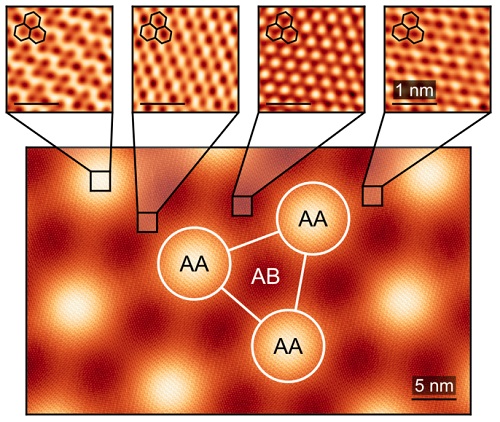
High-resolution images measured using the scanning tunneling microscope show quantum interference patterns in magic-angle graphene. The ways that these patterns change across the material tells researchers about the microscopic origins of its quantum states.
“MATBG shows a lot of interesting physics in a single material platform-much of which remains to be understood,” said Kevin Nuckolls, the co-lead author of the paper, who earned his Ph.D. in 2023 in Princeton’s physics department and now a postdoctoral fellow at MIT. “This insulating phase, in which electrons are completely blocked from flowing, has been a real mystery.”
To create the desired quantum effects, researchers place two sheets of graphene on top of each other with the top layer angled slightly. This off-kilter position creates a moiré pattern, which resembles and is named after a common French textile design. Importantly, however, the angle at which the top layer of graphene must be positioned is precisely 1.1 degrees. This is the “magic” angle that produces the quantum effect; that is, this angle induces strange, strongly correlated interactions between the electrons in the graphene sheets.
While physicists have been able to demonstrate different quantum phases in this material, such as the zero-resistance superconducting phase and the insulating phase, there has been very little understanding of why these phases occur in MATBG. Indeed, all previous experiments involving MATBG give good demonstrations of what the system is capable of producing, but not why the system is producing these states.
And that “why” became the basis for the current experiment.
“The general idea of this experiment is that we wanted to ask questions about the origins of these quantum phases-to really understand what exactly are the electrons doing on the graphene atomic scale,” said Nuckolls. “Being able to probe the material microscopically, and to take images of its correlated states-to fingerprint them, effectively-gives us the ability to discern very distinctly and precisely the microscopic origins of some of these phases. Our experiment also helps guide theorists in the search for phases that were not predicted.”
The study, which appears in the August 16 issue of Nature, is the culmination of two years of work and was achieved by a team from Princeton University and the University of California, Berkeley. The scientists harnessed the power of the scanning tunneling microscope (STM) to probe this very minute realm. This tool relies on a technique called “quantum tunneling,” where electrons are funneled between the sharp metallic tip of the microscope and the sample. The microscope uses this tunneling current rather than light to view the world of electrons on the atomic scale. Measurements of these quantum tunneling events are then translated into high resolution, highly sensitive images of materials.
However, the first step-and perhaps the most crucial step in the experiment’s success-was the creation of what the researchers refer to as a “pristine” sample. The surface of carbon atoms that constituted the twisted bilayer graphene sample had to have no flaws or imperfections.
“The technical breakthrough that made this paper happen was our group’s ability to make the samples so pristine in terms of their cleanliness such that these high-resolution images that you see in the paper were possible,” said Ali Yazdani, the Class of 1909 Professor of Physics and Director of the Center for Complex Materials at Princeton University. “In other words, you have to make one hundred thousand atoms without a single flaw or disorder.”
The actual experiment involved placing the graphene sheets in the correct “magic angle,” at 1.1 degrees. The researchers then positioned the sharp, metallic tip of the STM over the graphene sample and measured the quantum mechanical tunneling current as they moved the tip across the sample.
“Electrons at this quantum scale are not only particles, but they are also waves,” said Ryan Lee, a graduate student in the Department of Physics at Princeton and one of the paper’s co-lead authors. “And essentially, we’re imaging wave-like patterns of electrons, where the exact way that they interfere (with each other) is telling us some very specific information about what is giving rise to the underlying electronic states.”
This information allowed the researchers to make some very incisive interpretations about the quantum phases that were produced by the twisted bilayer graphene. Importantly, the researchers used this information to focus on and solve the long-standing puzzle that for many years has challenged researchers working in this field, namely, the quantum insulating phase that occurs when graphene is tuned to its magic angle.
To help understand this from a theoretical viewpoint, the Princeton researchers collaborated with a team from the University of California-Berkeley, led by physicists B. Andrei Bernevig at Princeton and Michael Zaletel at Berkeley. This team developed a novel and innovative theoretical framework called “local order parameter” analysis to interpret the STM images and understand what the electrons were doing-in other words, how they were interacting-in the insulating phase. What they discovered was that the insulating state occurs because of the strong repulsion between the electrons, on the microscopic level.
“In magic-angle twisted bilayer graphene, the challenge was to model the system,” said Tomohiro Soejima, a graduate student and theorist at U.C. Berkeley and one of the paper’s co-lead authors. “There were many competing theories, and no one knew which one was correct. Our experiment of ‘finger-printing’ was really crucial because that way we could pinpoint the actual electronic interactions that give rise to the insulating phase.”
By using this theoretical framework, the researchers were able, for the first time, to make a measurement of the observed wave functions of the electrons. “The experiment introduces a new way of analyzing quantum microscopy,” said Yazdani.
The researchers suggest the technology-both the imagery and the theoretical framework-can be used in the future to analyze and understand many other quantum phases in MATBG, and ultimately, to help comprehend new and unusual material properties that may be useful for next-generation quantum technological applications.
“Our experiment was a wonderful example of how Mother Nature can be so complicated-can be really confusing-until you have the right framework to look at it, and then you say, ‘oh, that’s what’s happening,’” said Yazdani.
Read the original article on Princeton University.

